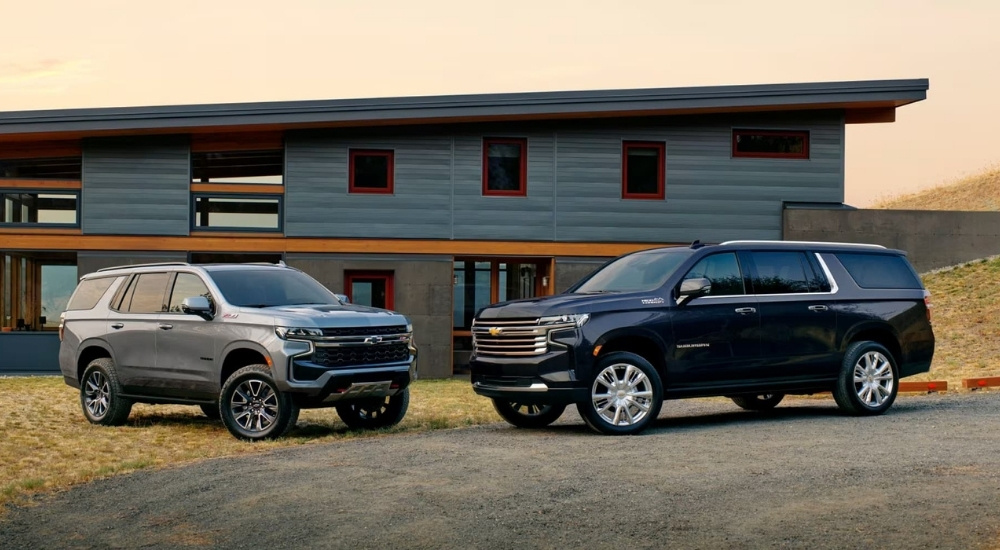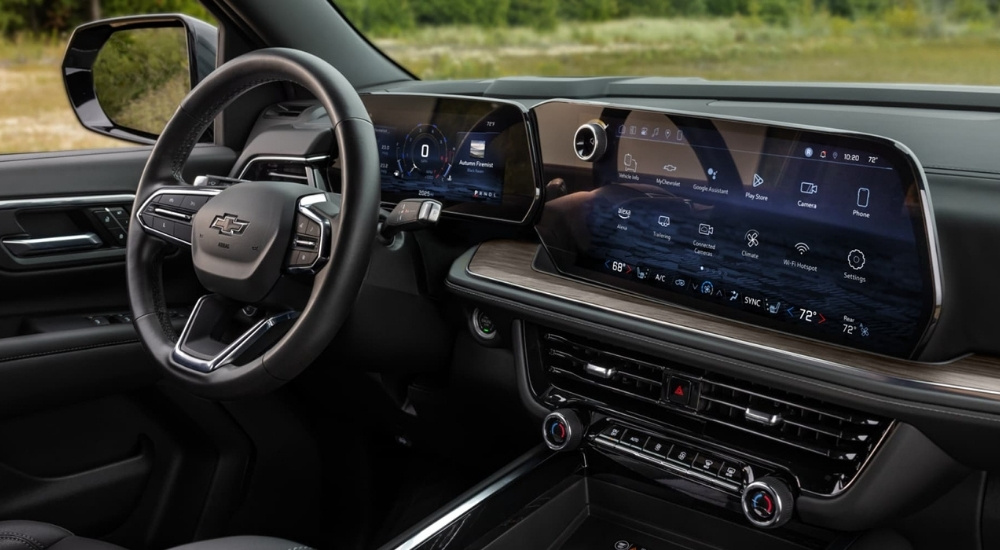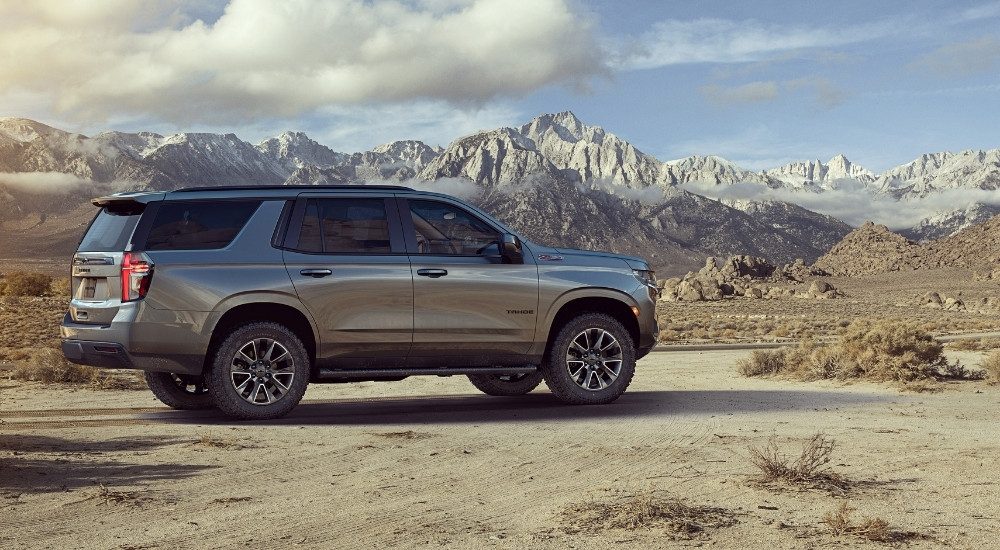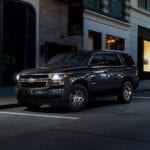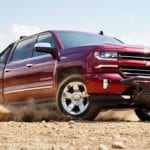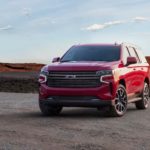It wasn’t so long ago that “SUV” meant a massive vehicle built on a truck frame. A quick look at the Chevy SUV lineup in the 1990s and early 2000s will reveal a family of truck-based vehicles constructed with body-on-frame platforms, including the full-size K5 Blazer, Tahoe, and Suburban (all based on the C/K Series trucks) and the midsize S-10 Blazer (based on the S-10 pickup). However, in the late 2000s, things started changing. With the Chevy Equinox leading the way, a new generation of car-based unibody crossovers started appearing.
If you visit a Chevy dealer today, you will find the unibody Trax, Trailblazer, Equinox, Blazer, and Traverse, with only the full-size Tahoe and Suburban still clinging to their truck-based roots. While these full-size models do continue to maintain respectable sales figures, they are nowhere near as popular as they once were. Further, Chevy and the other GM brands dominate the full-size segment, with Ford, Toyota, and Nissan selling their traditional SUVs in much smaller numbers. Given current market trends, are we about to see the extinction of the full-size SUV? Or could there soon be hope for the segment from an unexpected direction?
Full-Size SUV Sales Figures Are Fluctuating
Back in the 2000s, before the Great Recession, Chevy was handily selling over a quarter million full-size SUVs every year. Roughly two-thirds of sales were the Tahoe, while a third of sales were the extended-wheelbase Suburban. When the recession hit, full-size SUV sales fell off a cliff, stabilizing at just over 100,000 annually by the end of the 2000s. They slowly began trending upward again over the 2010s, reaching a high of over 164,000 in 2018, only to enter a rollercoaster during the Pandemic years.
In 2020, sales of the Tahoe and Suburban plunged to 121,000 units, only to skyrocket to 191,000 in 2021 (a number that Chevy had not seen since 2007) and then fall back down to 156,000 in 2022. While Chevy is the market leader in the full-size SUV segment, it is interesting to note that the Ford Expedition saw similar, although less severe, fluctuations during this period, falling from 86,000 sales in 2019 to 77,000 in 2020, only to shoot back up to 81,000 in 2021 and then crash to 62,000 in 2022.
It is hard to get useful information from pandemic-era sales figures because it is nearly impossible to untangle normal supply and demand from the numerous shortages and production constraints. How much of the 2020 and 2022 slumps were actual lack of demand rather than buyers simply being unable to find a vehicle for sale, and how much of the 2021 peak was simply pent-up demand from the previous year is impossible to say. However, while there is still some demand for full-size SUVs, it is much lower than it once was.
Demand Is Growing, but Not for Full-Size SUVs
How do we know full-size SUVs still aren’t resonating with buyers like they used to? We can find out by comparing sales to full-size pickup trucks, another segment that was heavily hit by the recession. Chevy’s full-size SUV sales fell from 229,000 in 2007 to 114,000 in 2009 (a 50% drop), and Chevy’s full-size truck sales fell from 618,000 in 2007 to 316,000 in 2009 (a 49% drop). However, in 2015 the Silverado sold over 600,000 units again, while combined Tahoe and Suburban sales peaked at just 164,000 units in 2016. While both segments suffered almost identical blows during the Great Recession, full-size truck sales returned while full-size SUV sales didn’t.
Now, there is one wrinkle to consider––the introduction of three-row crossover SUVs. In 2009, Chevy introduced the Traverse, which offered similar passenger and cargo capacity in a more affordable and efficient package. The debut of the Traverse perfectly coincided with the abandonment of the full-size SUV segment, and families flocked to it. After just two years on the market, the Traverse saw over 106,000 units sold in 2010. When combined with the 120,000 Tahoe and Suburban models sold that year, the result is very close to the quarter-million full-size SUVs sold before the recession.
Sales of the Traverse peaked in 2019, with 147,000 units sold. That means in 2019, Chevy sold an impressive 300,000 three-row SUVs across its three models, handily exceeding the pre-recession peak. That means there is actually growing demand for large, roomy family vehicles, but buyers are less interested in traditional full-size SUVs. This is also reflected in the overall list of best-selling three-row models. At the top, you’ll find crossovers like the Toyota Highlander (222,000 sold) and Ford Explorer (207,000 sold) outselling the Tahoe by two to one. With clear trends like this, what is the future of the full-size SUV?
Differentiating the Segment
When truck-based SUVs ruled the market, the only thing needed to differentiate different models was size: the Blazer was smaller than the Tahoe, which was smaller than the Suburban. When the first crossovers like the Equinox entered the market, they simply filled out the bottom rungs of the ladder as smaller and more affordable options. However, three-row crossovers like the Traverse broke the mold and outcompeted traditional full-size SUVs at their own game. More affordable, more efficient, and easier to drive, there was little reason for most families to opt for anything other than a crossover.
To make their full-size models stand out in the market, manufacturers needed some way to differentiate truck-based vehicles from crossovers and make them worth the premium. Chevy has largely relied on the luxury angle, positioning the Tahoe and Suburban as the premium counterparts to the more affordable Traverse. However, while emphasizing the added luxury features of the larger models may seem like an obvious choice, it is open to question whether it is the right choice.
Withholding luxury features from the Traverse in an attempt to force buyers upmarket to Chevy’s full-size options may very well have instead pushed more buyers towards competing three-row crossovers like the Highlander and Explorer, which did not follow this strategy. Chevy is also restricted in just how upmarket it can make its vehicles since the Tahoe and Suburban have to compete with other, more luxurious, GM products like the GMC Yukon Denali and Cadillac Escalade (the Ford Expedition and Toyota Sequoia have similar issues competing against the Lincoln Navigator and Lexus LX).
The Future of the Full-Size SUV?
There is one possible bright light on the horizon, and it is a natural fit for the full-size SUV segment, although it is surprising that manufacturers have yet to capitalize on it. The real advantage of a body-on-frame SUV is its superior capability, allowing it to do things and go places that a crossover simply cannot. However, there have yet to be any serious off-road variants of these powerful vehicles. Off-road trucks like the Silverado Z71 and ZR2 are topping the sales charts, and even crossovers are getting in on the game with options like the Jeep Grand Cherokee Trailhawk and GMC Acadia AT4, but where is the Tahoe ZR2 or Expedition Tremor?
The Toyota 4Runner, a midsize body-on-frame SUV, is a particularly good example of how embracing the off-road craze could help reinvigorate the full-size SUV segment. By virtually every metric, the 4Runner is an obsolescent and underpowered gas-guzzling vehicle––yet Toyota sold over 121,000 of them last year. Why? Because it is a “real SUV” that conjures up images of rugged adventure. There is no reason that full-size models like the Tahoe and Suburban can’t do the same and market themselves to the same demographics that are buying Silverado pickups in record numbers. The question is, will Chevy and other manufacturers of full-size SUVs be able to make the leap and transform the segment?
